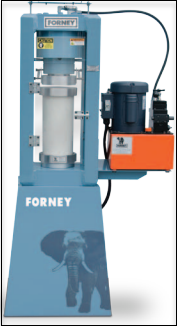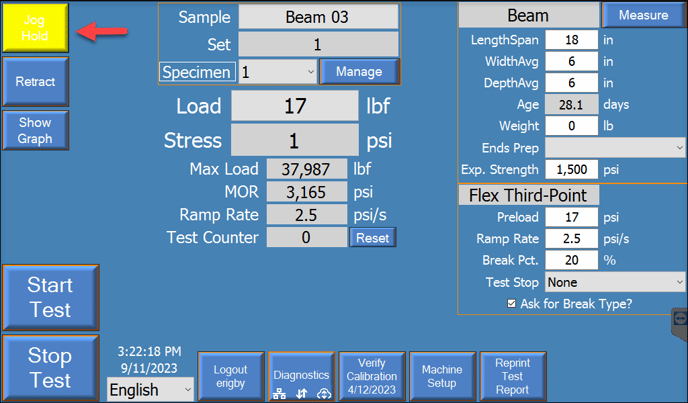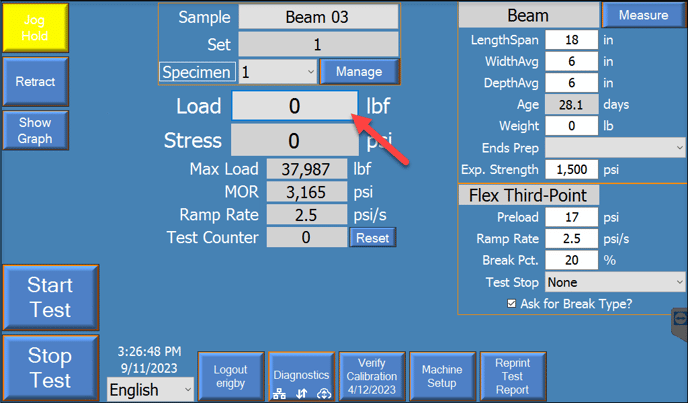How to use Tare on your ForneyLink Machine Controller
To ensure proper test results it is essential to remove the residual load from the break head present in your Forney Test Machine prior to testing.
Note:
- Tare should be performed prior to testing.
- Once the ForneyLink Test machine is tared all subsequent specimens of that dimension can be tested without a need to tare between specimens.
- If a new specimen type or dimension is to be tested the ForneyLink Test Machine should be tared again.
The Tare function is used to zero out the residual load present in the system before testing begins. This includes the weight of the hydraulic cylinder and platen—essentially any load that exists in the system before a specimen is introduced. By pressing the Tare button, the machine removes these baseline values, ensuring that only the load applied directly to the specimen is measured and recorded during the test. This step is critical for accuracy, as it establishes a true zero reference point so that all subsequent data reflects the actual performance of the material being tested.
Operation:
- Select the specimen to be tested using ForneyScan or Sample Select.
- Place the specimen in your Forney Test Machine.

- Hold the Jog Advance Button to close the gap between the top of the Forney Test Machine and your specimen to about 1/16 inch above the top of the specimen.

- When you release the Jog Advance button, the machine will display “Hold” to show that it’s holding the piston in position.

- Press the Load button to tare the Forney Test Machine's load to zero.

Taring by Specimen Type (ASTM Recommended):
-
Cylinders (ASTM C39):
Bring the upper platen to about 1/16 inch above the cylinder, tare the load, then advance to full contact to ensure uniform bearing on the ends. -
Cubes (ASTM C109):
Center the cube properly. Bring the platen or bearing block to about 1/16 inch above the specimen, tare, then make full contact. -
Beams (ASTM C78):
Place the beam on the support rollers. Bring the loading head to about 1/16 inch above the beam surface, tare to zero, then advance to make snug contact. -
Concrete Masonry Blocks (ASTM C140):
Center the block correctly between the platens. Bring the top platen to about 1/16 inch above the block, tare the load, then advance to firm contact across the bearing surfaces. -
Bricks (ASTM C67):
Align the brick properly to ensure full bearing. Bring the platen to about 1/16 inch above the brick, tare the load, then advance to firm, uniform contact. -
Grout Prisms (ASTM C1019):
Center the prism carefully on the bearing blocks. Bring the upper platen or bearing block to about 1/16 inch above the prism, tare the load, then advance to full contact for proper bearing.